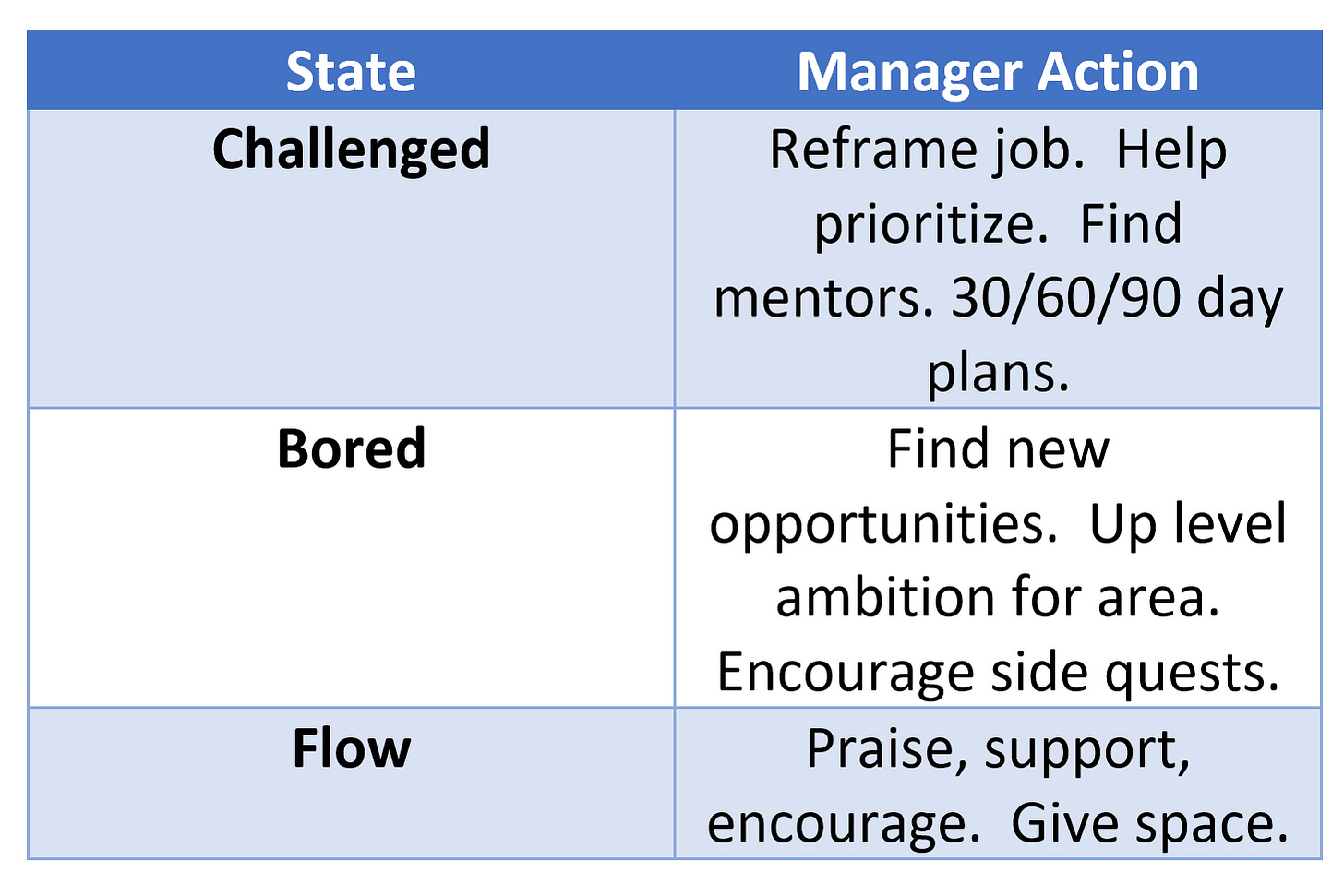Burnout & Boredom: A Manager’s Pandemic Retrospective on Mental Health
Pandemic-born strategies for managing stress, setting boundaries, and finding peak performance
Hello future historians of 2040 –
So you have a need to look back in history to the 2020s to see how we all survived the global pandemic. What’s going on? AI finally went too far? DeFi causing a financial meltdown? Yet another pandemic without preparation?
Never mind…I’m not sure I want to know.
Regardless, 2020 & 2021 was a time when we were forced to learn how to survive and thrive under intense global situations. I’m not surprised if future or aspiring historians are looking for insights. (They all should, of course, subscribe to Mind The Beet if they haven’t yet. 😏)
My job became more intense over the past year – a crucible in leading through both enormous uncertainty and increasing pressure to deliver. Every aspect of creating software – design sprints, reorgs, product launches, exec reviews, customer co-design sessions – has been transformed to work remotely.
Most of my networking chats with fellow managers these days devolve into a mix of best practice conversations and therapy sessions about managing through these times. We all have become more involved in managing our teams’ and our own mental health.
The one silver lining is that I hope that we are birthing a crew of managers who have a crisis-born intuition for balancing the mental and emotional needs of their teams.
Here are the top 5 things I’ve seen for managing through a crisis and encouraging mental health and balance. This post is for managers and employees – anyone who is looking for survive-and-thrive tactics.
1. Burnout, Boredom & Flow 🌄
Team check-ins took on outsized importance this past year. Stand-ups needed to incorporate get-to-know-you elements to remind ourselves we were all humans. Staff meetings needed more time dedicated to sharing burdens rather than status. Not just “how you are doing?” but “How are you doing….really?”
While the emotional touchpoints were required, I still found the need to use frameworks that enable a clear exchange of views on how someone’s job matched their ambition. For years, I’ve been using Mihaly Csikszentmihalyi’s Flow Diagram for this:
I’ll ask an employee to place themselves on this chart. Often I’ll also place them based upon what I’ve seen and we compare notes.
There are three areas:
Challenged: In the upper left corner, that’s where you are challenged beyond your current skill level. You are learning new things. Often you might feel overwhelmed – you need support. Stay here too long and you enter burnout territory.
Bored: In the lower right corner, that’s where your skills are greater than the work in front of you. Things are easy. You aren’t being challenged. Stay here too long and you are bored.
In the Flow: Csikszentmihalyi’s research is mainly about how people can stay in the middle range – The Flow. This is where your skills and challenges are matched. If this chart had a third dimension of productivity & happiness, there would be a giant mountain in the middle.
The result of all this is what I call the boredom & burnout boundary.
At any given time, I find about 40% of the team is in the Flow state. 20% are in danger of being bored and 20% are in danger of burnout; plans are needed to address both these camps. The final 20% are generally in the challenged category but no plan to change is needed. There should be times in your career where you are pushed beyond your flow state – e.g. a stretch opportunity where you need time to find the Flow.
Here's a simple table of what you can do as a manager once you level set on where someone is:
Simple, right? But the key is to force the conversation and assessment vs. stay on auto-pilot.
Carveouts to learn more:
Check out this awesome game if you want to a structured way of getting deep answers to the question of “How are you doing….really?”: We’re Not Really Strangers
If you want to learn more about Flow, especially how it relates to athletic performance, look no further than Michael Gervais’ podcast called Finding Mastery.
2. Name it to tame it 💯
One of the most powerful examples of vulnerable leadership in action that I’ve seen came midway through last year when my boss, an organizational leader of a team of about 140, talked about all that he was missing as a result of the pandemic – from not seeing family, not being able to travel, his kids missing opportunities. Importantly, he put a name to what he was feeling: grief – the sorrow felt as a result of a sense of loss.
Giving a name to how you feel is a powerful step to healing and acting. Asking in 1:1 conversations “What is the name for what you are feeling about this project?” can be a conversation starter. It leads with vulnerability and curiosity.
Other examples of this behavior from the past couple of years include:
A direct report sending me the New York Times article on languishing and letting me know that is exactly how he felt at the time.
Helen and I had quality conversations about how the pandemic impacted each of us, given that I am an introvert (I love being around people, but I draw energy and recharge by myself) and Helen is an extrovert (thrives and recharges when spending time around others and in larger groups).
Multiple times over this pandemic when I could have been misunderstood over a video call, other participants gave me grace - the practice of assuming the best intent. “Is this an opportunity to give grace?” is a critically important pause-and-reflect reframe during this period of new communication methods.
Yes, a whole new language has entered our vocabulary during this pandemic. Let’s hope it stays around. These are powerful concepts.
Carveouts to learn more:
Here’s a recent article my boss published on his leadership style that expands on the concept of giving names to behaviors and feelings.
3. First team 🤗
Naming and prioritizing the concept of “First Team” was the number one thing I ever did to improve my own sanity at work.
Most of our jobs are heavily matrixed – we all sit on various cross-team initiatives, have teams reporting to us, work across geographies, participate in other’s leadership teams, and work across disciplines. It can be hard to define who your tribe is.
“First Team” is primarily defined as a crew of people you can be yourself around. There is no covering of who you are. There is no need to perform or role play. There could be business results to accomplish among your First Team, but the First Team priorities being a source of succor and creating a healthy tribe among one another.
Signs of your First Team include those you are eager to share news with and have a safe place to make a joke around. A mistake is easily recoverable from within your First Team. You find yourself dropping by – in chat virtually these days – just to check in and see what’s up.
Most likely it’s a set of people who are your peers. Often not the people you work most closely with, but still people with context about your daily struggle.
Some of the unhappiest times in my career are when I tried to create my own tribe vs. joining one around me. A gift a manager can give a leadership team is to provide that first-team feel to her staff, but she should remember to also find her own first team too.
I used to think this was a trivial afterthought to my work life; I now think it’s the most important part.
Carveouts to learn more:
See my previous writing on how to work with people in tech jobs:
4. The Stress Dashboard: An Early Warning Signal 📊
I have a new relationship with stress as a result of the pandemic. I used to think stress was a binary state – either an “I’m stressed” or “I’m not stressed” state. Instead, I realize it’s more like the barnacles that build upon the underside of a ship that’s been at sea a long while. It creeps up on you slowly and builds on itself.

Putting this into practice, here’s something I tweeted about a while ago:

Recently, we had a fantastic speaker come to our team that introduced the concept of a Stress Dashboard to us. The mechanic is simple – think about ways you know you are stressed: what you choose to eat, body aches, how clean the house is, do you see the humor in things, and if your emotions are creeping into your judgment of others and their plans. Whatever works for you.
I think most people’s relationship with stress starts with trying to identify the causes of stress after it’s already strong. This reframes and focuses on an early warning system using the symptoms of stress that you can easily detect.
Carveout to learn more:
If you realize your stress levels are rising, consider a recharge week. Here’s how I approached mine this year:
5. Set boundaries. Reset them often. 🧱
Before 2020, we all set boundaries based upon a long-established equilibrium. The insidious thing about the pandemic is how much the current intensity that worked for you, your mental energy, and your lifestyle changed without any official notification. Who knew the available energy was going to be reduced by such an amount because of Zoom fatigue?
The frothy part of boundary setting is the balance between impact mindset and execution mindset. With impact mindset, you let your job define your boundaries. You focus on what your company needs to succeed e.g. be the quarterback that wins the Super Bowl. It’s reasonable but often flawed and it too often gets people out of the Flow state. Contrast this with the execution-mindset, which is grounded in achieving your peak performance e.g. create the environment around you so that you can be the best NFL quarterback you can be.
In tech, goals are not as simple as winning a Super Bowl. There is always more work than time. So while I use an impact mindset on products and for teams as a whole as a form of creating clarity, I take a very execution-focused mindset to setting boundaries. I strive for my own peak performance and then match my job to that. Counterintuitively, this philosophy has been a career multiplier for me. Letting go of what I think the job needs from me and prioritizing how to achieve peak performance has lead to step-function results.
Here’s how I personally have put this into action over the past year in terms of my necessary work boundaries and defaults to thrive in the pandemic:
No meetings before 9:30AM: I am with my kids and taking them to school. 3-4 exceptions per month.
12-1 lunch is “me time.” At the start of the pandemic, it was for me to spend time with family. More recently, I’ve switched it to personal time to recharge or catch up on news or podcasts.
Keep 4-5PM free for focus time. This is how I wind down the day. This prevents nighttime work because I have the space to finish the urgent. I’m about 50% successful at keeping this time sacred right now.
5-9PM is time with the family. This was true before the pandemic and didn’t change. Before the pandemic, Helen and I each took one of these timeslots each week for our own night out – Helen generally spent it seeing friends and I would spend it at the gym or on passion projects. The pandemic removed that outlet and we switched to alternating weekend mornings for personal recharge time.
10:30PM-11:30PM: Fiction reading time. This has been my longest-running tradition in my life. My brain winds down by escaping into new worlds and fictional settings.
No meeting Fridays. Or as I heard it recently called – Focus Fridays. This is time for the important not the urgent. Some of my most impactful writing and product framing for the team comes from this time.
Monday morning focus time. I spend Monday morning organizing my week for the big things I want to accomplish. It’s both a way of defining outcomes to achieve for the week and to consolidate status for my team and partners in a way I share out with a weekly newsletter.
Nighttime meetings once a week (Tuesdays 9PM-11PM). I drive a hard budget for meetings with other geographies after the kids go to bed – limited to once a week. I find the budget helpful – if over budget, async ways are created. If under budget, it’s a great excuse to connect with team members I otherwise wouldn’t see during my daytime. Keeping this tradition also generates empathy for geographies that frequently meet at these hours.
No weekend work: I stopped weekend work once the pandemic began. It wasn’t a common thing for me before the pandemic started – maybe a 20% thing – but with the intensity of energy needed, it just wasn’t a realistic way of working anymore. The outlet of a weekend free of work was sorely needed.
It’s intentional that there are a lot of rules that restrict my work time. It’s how I train for peak performance to do my best work; I deliver better results that way.
Carvouts to dig deeper:
I’ve written before more details on how I manage my time:
Wrapping up: Post-Pandemic Management
This pandemic started with a sudden removal of almost everyone from Flow state – either to the Challenge area as they were forced to rapidly learn a new way of work, or the Bored state if it was just not possible to be ambitious at one’s job given the economics of the pandemic. Grief at the loss of all this set in, followed by languishing as it extended for a longer period of time. New boundaries had to be set as the energy level available to all of us shifted. Those of us lucky enough to have First Teams had outlets to process with like-minded individuals. Those savvy enough about all of this had early warning signals on their stress level and were able to take actions early enough that left them feeling in control.
Where do we go from here? There is a lot of uncertainty still ahead, but one of the most thought-provoking pieces on all this was a story in The Economist that studied post-pandemic periods throughout the course of history. One of the key insights of post-pandemic life was the sense of adventure that was inspired in many:
It’s incumbent on all of us as leaders to frame and re-recruit our teams, including framing a sense of newness and adventure for those who want it. It takes visions that generate new energy, not being afraid to shift job responsibilities around, and setting the dial to taking bolder bets on strategy. Have you retooled how you recruit and set ambitions for your team given the surge in employees who want adventure?
Coda on Privilege
We end many of our Mind The Beet posts with a reflection on how we give back through donations and other causes. It’s a weekly reminder for our own family to reflect on how much privilege we have. This week’s post is on mental health and the kind you can have destiny over. Recently, though, some friends of ours have had to deal with a mental decline of a loved one that currently there is no destiny to control: Alzheimer’s Disease. The grace and caring showed in such a situation were inspirational and a reminder of what it means to have loved ones and connect with them and care for them. In fact, next Tuesday is World Alzheimer’s Day - consider donating.










Appreciate the contribution this article makes. I'm running some research at the moment and am noting some interesting results. One of these is that there are some who are both challenged and bored, for example working from a never-ending TO-DO list (or backlog) while at the same time feeling disconnected from purpose with a stagnating career. This seems to be a far more toxic combination.
Exceptional article, thanks for sharing your experience, and helping/motivating us to think differently to have better work/life balance as well as good health